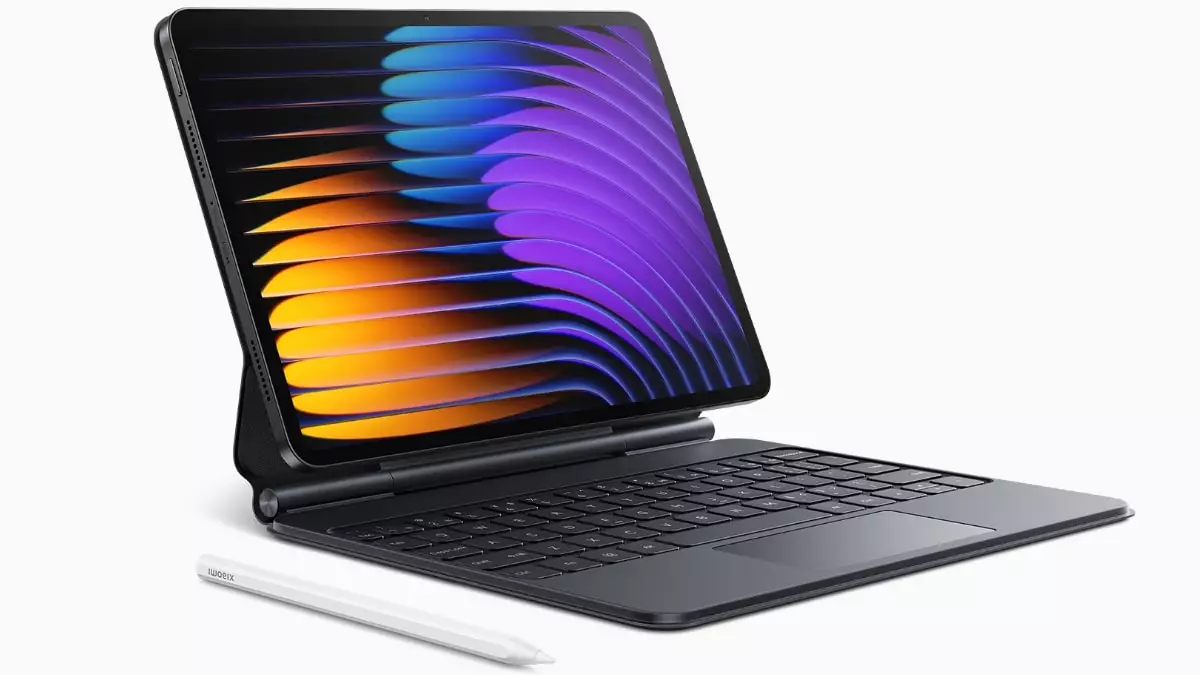Xiaomi continues to push the envelope in the world of tech with the unveiling of the Xiaomi Pad 7 Pro and the standard Xiaomi Pad 7. Presented during a recent launch event in China, these new tablets exhibit impressive specifications and features that aim to capture the attention of tech enthusiasts and casual users alike. This article will delve into their core attributes, pricing strategies, and comparisons to give readers a comprehensive view of these devices.
Both the Xiaomi Pad 7 and Xiaomi Pad 7 Pro come equipped with an 11.2-inch display, boasting a remarkable 3.2K resolution (2136×3200 pixels) and a refresh rate of 144Hz. This combination creates a fluid visual experience that is particularly beneficial for gaming and multimedia consumption. Moreover, both tablets feature Dolby Vision support, enhancing their ability to deliver lifelike color and brightness, making them ideal for users who prioritize high-quality video playback.
However, there’s much more to their displays than just resolution and color quality. The peak brightness of up to 800 nits ensures that the screens remain usable in bright environments, and for users concerned about eye strain, the TUV Rheinland certification for low blue light emission is a valuable addition. These features align with the increasing demand for devices that not only perform well but also consider the user’s well-being.
Diving deeper into performance, the Xiaomi Pad 7 Pro is powered by the advanced Snapdragon 8s Gen 3 SoC, offering a significant edge in processing speed and efficiency. It’s available in configurations up to 12GB of RAM and 512GB of onboard storage, making it suitable for demanding tasks such as gaming, graphic design, or video editing.
In contrast, the standard Xiaomi Pad 7 is equipped with the Snapdragon 7+ Gen 3 SoC, which still delivers impressive performance but is positioned as a more budget-friendly option. Users can choose up to 12GB of RAM and 256GB of storage, making it a viable alternative for those not needing the absolute best in specs. The performance spectrum between these two models caters effectively to different consumer needs, allowing Xiaomi to target a broader audience.
When it comes to camera systems, the Xiaomi Pad 7 Pro features a 50-megapixel rear camera and a 32-megapixel front camera, enhancing its appeal for users who require quality photography and high-resolution video calls. The addition of high-quality optics is a strategic move from Xiaomi, considering the growing trend of remote work and online communication.
Conversely, the standard model has to settle for a 13-megapixel rear camera and an 8-megapixel front camera. While these specifications may not match the Pro version, they are adequate for everyday photography needs and casual video calling.
Both devices offer robust connectivity options, including 5G support, Wi-Fi 7 compatibility, and various sensors such as acceleration, ambient light, and gyroscope sensors. Such versatile connectivity positions the tablets strongly in a market that increasingly prioritizes seamless internet access and additional functionalities.
Battery performance is one area where both models shine. They house an 8,850mAh battery, capable of offering extended usage times for media consumption, productivity tasks, or gaming. The Xiaomi Pad 7 Pro supports fast charging of up to 67W, while the Xiaomi Pad 7 lags a bit behind with a maximum charging speed of 45W. The availability of fast charging options is a crucial factor in today’s tech landscape, especially for users operating on tight schedules.
Price points for the Xiaomi Pad 7 Pro start up at approximately CNY 2,499 (around Rs. 28,500), reaching up to CNY 3,499 for higher-spec models. The standard Pad 7 offers a more accessible entry, with the base model priced at roughly CNY 1,999 (around Rs. 23,500). This strategic pricing enables Xiaomi to appeal to various segments, from budget-conscious buyers to premium customers seeking high-end specifications.
The Xiaomi Pad 7 and Pad 7 Pro reveal a well-thought-out approach by Xiaomi to cater to differing consumer needs and market demands. With impressive displays, solid performance, and competitive pricing, these tablets position themselves as strong contenders in the evolving tablet marketplace. As technology continues to advance, the future of portable computing looks great for Xiaomi and its users.

